Hydrocodone is a powerful opioid, widely used in the treatment of severe pain. Yet many prescribed it soon find themselves dependent on the drug and grappling with withdrawal symptoms associated with cutting ties to their opioid supply.
If this sounds familiar, you may be ready to take the next step toward regaining your freedom from hydrocodone use disorder – learning how to manage withdrawal safely and effectively. In this guide, we present key strategies for hydrocodone prescription drug withdrawals that can help you begin your journey back to health and well-being.
Risks associated with hydrocodone prescription drug use
Hydrocodone prescription drug use has significantly increased in recent times, with some patients relying on it for pain management. However, it is important to understand that hydrocodone is a powerful narcotic and carries a range of risks if it is not used properly.
These risks include:
- Addiction: Hydrocodone is highly addictive and can quickly lead to physical and psychological dependence, even when taken as prescribed.
- Overdose: Taking too much hydrocodone can result in an overdose, which can be fatal.
- Negative interactions with other drugs: Hydrocodone can interact negatively with other medications, including over-the-counter drugs and supplements.
- Adverse side effects: Some individuals may experience side effects such as nausea, dizziness, constipation, and confusion when taking hydrocodone.
- Tolerance: Over time, the body can develop a tolerance to hydrocodone, requiring higher doses to achieve the same level of pain relief. This is one of the main reasons why people become dependent on the drug.
It is crucial to always follow the medication’s instructions as provided by the physician, and never exceed the prescribed dosage. In addition, patients are encouraged to inform their healthcare professionals of any unusual changes or symptoms that they may be experiencing while taking the medication.
Signs of a potential hydrocodone addiction
Recognizing the signs of addiction is critical in preventing long-term health consequences. Some of the symptoms include:
- Building a tolerance to hydrocodone requires higher doses to achieve the same effects.
- Experiencing withdrawal symptoms when trying to cut back or stop taking hydrocodone.
- Taking more than the prescribed dosage without consulting a healthcare professional.
- Craving hydrocodone and feeling unable to control its use.
If you or someone you know is experiencing these signs, it may be time to seek help and support for hydrocodone use disorder. With the right treatment and support, recovery is possible.
It is also vital to observe changes in behavior such as mood swings, secrecy, and social withdrawal. If you or someone you know displays such signs, seeking professional help is necessary to overcome the addiction and prevent further damage to the body and mind.
The withdrawal process and how to safely manage it
For those who have become dependent on a substance, withdrawing from it can be an incredibly difficult and sometimes dangerous process. It’s important to understand what to expect and how to safely manage the withdrawal process.
This involves working with a healthcare professional, creating a plan that includes medication, therapy, and support, and being honest with yourself and others about your progress. While it may not be easy, taking these steps can help you achieve a successful and safe withdrawal and move towards a healthier, substance-free life.
Ways to make the hydrocodone withdrawal process easier and more manageable
Withdrawal can be a challenging and uncomfortable experience, but there are ways to make it easier and more manageable. Here are some tips:
- Stay hydrated: Drinking plenty of water can help flush the drug out of your system and alleviate symptoms like nausea and headaches.
- Get enough rest: Withdrawal can cause fatigue, so it’s important to make sure you get enough rest and sleep during this time.
- Eat well: Eating a healthy, balanced diet can help replenish nutrients that may have been depleted during substance use.
- Engage in light exercise: Gentle exercises like walking or yoga can help reduce anxiety and improve mood.
- Seek support: Whether it’s from friends, family, or a support group, having someone to talk to and lean on during this difficult time can make a big difference.
Remember, everyone’s withdrawal experience is different, and it’s essential to listen to your body and seek medical assistance if needed. So don’t lose hope – take the first step towards a healthier and happier life today!
Examine different treatment options for people who are dependent on hydrocodone
There are several different treatment options available, depending on the individual and their unique situation. For some, detoxification may be necessary to first rid the body of hydrocodone before seeking further treatment.
Others may benefit from outpatient therapy or counseling, while inpatient rehabilitation programs may be recommended for more severe cases of hydrocodone dependence. It is important to work with a qualified medical professional to determine the most effective treatment plan to help break the cycle of hydrocodone dependency and promote lasting recovery.
Contact Arrowwood Addiction Treatment Center Today
Overcoming addiction and successfully managing withdrawal is a complex process that requires support, determination, and dedication. Seeking professional help is not a sign of weakness but rather a necessary step towards recovery.
If you or someone you know is struggling with hydrocodone dependence, reach out to Arrowwood Addiction Treatment Center today for comprehensive and individualized treatment options. Our team of healthcare professionals is dedicated to helping individuals break free from addiction and lead healthy, substance-free lives.

